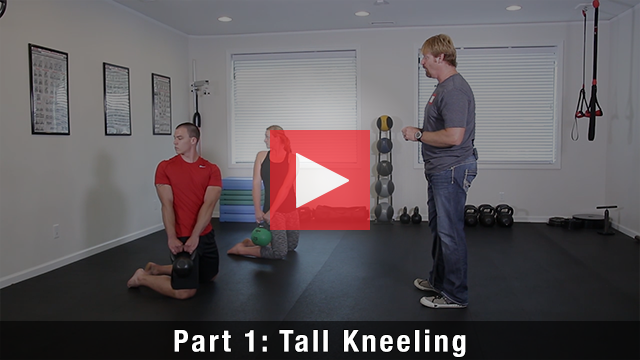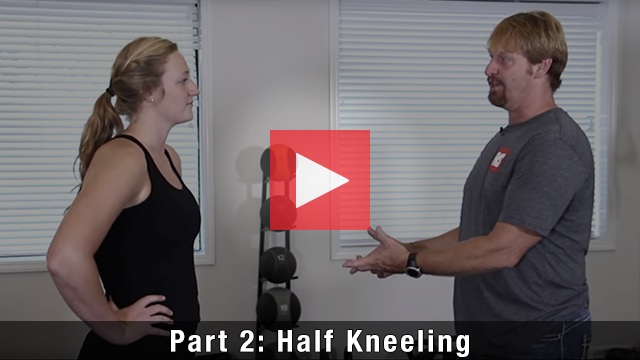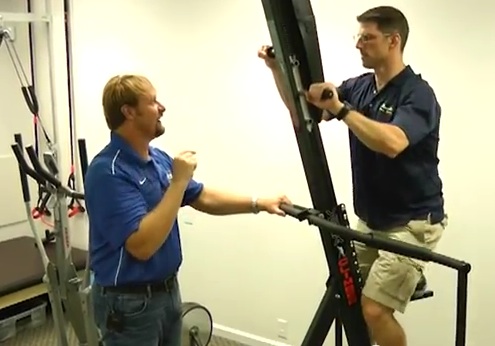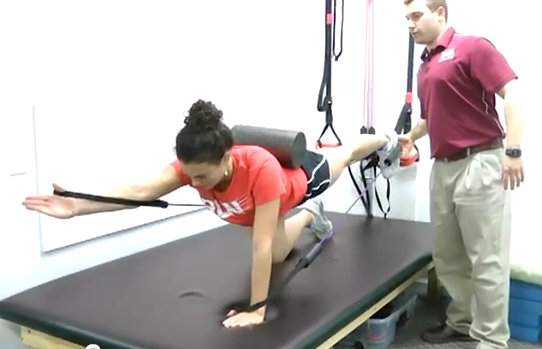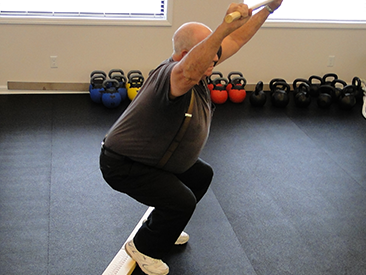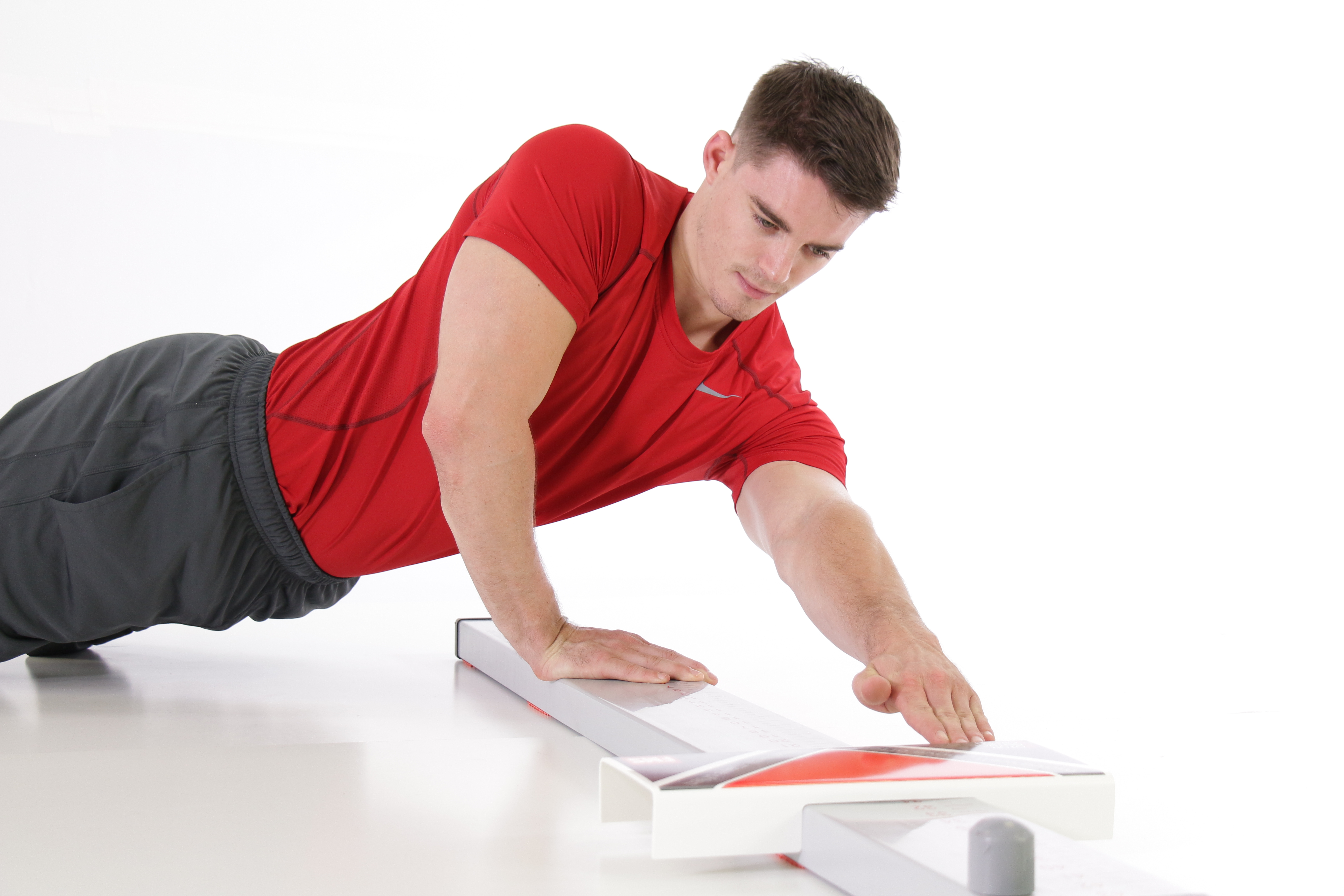Hitting Save on a Movement Document
Written by Gray Cook Video
Human movement is a miraculous occurrence.
Though we often take credit for movement patterns, we don't make or create movement patterns. They occur without us.
But we can grow them. We can correct them, and we can develop them.
We can also actually complicate a beautiful, natural and authentic process with our oversimplification or with the polar opposite, our over-analysis.
First of all, creating good movement patterns is much more complex than just creating mobility . . . however, if mobility is not available, the vital sensory input for better motor control and stability will not be available.
Most people can see the inherent mobility training within the practice of yoga. What many don't understand is that the practice of yoga, when done correctly, is more amazing for stabilization. The part of the body that is elongated, stretching and going through a mobility pattern is only possible because another part of the body is creating stability from its interaction with the ground and its creation of a base. The breathing that all wise yoga instructors obsess upon is there to both set better motor control and stabilization and allow greater elongation, flexibility and mobility.
I've hit upon two very important patterns that may help you hit save on a well-written mobility document so you can convert it to a movement pattern.
These activities are self-limiting, so the instructor's eye should be on movement. The instructor’s cues should always be simple and focused more on breathing and relaxation than execution and tension.
These tall-kneeling and half-kneeling holding patterns are the linchpin that create a continuous link from your mobility work into your carrying work and your lifting work.
I have often said:
When you have problems with your lifts, do more carries...
When you have problems with your carries, do more holds...
And, when you have problems with your holds, do more mobility work.
You should come out of the rabbit hole the same way you go in. This follows the developmental sequence most humans explore when they are learning their skills for locomotion and manipulation.
Hopefully, you are reading and watching this with some degree of competency for gaining (or regaining) mobility. The real essence comes with motor control and stabilization. Just because mobility and flexibility are available does not mean they will be used in the most economical and efficient way. Unfortunately, stabilization training and motor control training, as practiced by some individuals, look a lot like strength training.
Motor control training is much more than just creating sets and reps for stabilizer muscles. These muscles don't create stability and motor control within movement patterns because they are so strong. They do it because they are so fast, so coordinated and so perceptive.
The first bottleneck of stabilization training isn't even movement pattern training - it's postural training. And it is much more than standing up straight or balancing a book on your head (not so say that those are bad drills and don’t have their uses).
As with these examples, I often look for ways to expose a lack of motor control in a particular pattern, position or even one direction compared to another.
Now it's up to you...
- Watch It
- Do It
- Coach It
Related Resources
-
Can one FMS test predict the final score?
Posted by FMS
Please login to leave a comment
20 Comments
-

yarahhh 9/29/2015 1:06:05 PM
Thank you! I did it myself and noticed that my low back hurts when I have the kb behind and turn. It is the same feeling I have when I do backbends and didn't do a proper warming up. The feeling stayed for 10 minutes after while. I am trying to engage my core, or gluts, or both, trying to relax my low back. But can't change it. Any suggestions? Thank you so much!
-

Vilnis 9/28/2015 7:37:31 PM
Just watched and simultaneously did it. Feel warmed up, more mobile already. won't have to do my active morning mobility drills today. Thank You
-

-
Kyle Barrow 9/29/2015 1:06:05 PM
Yarahh,
What does your FMS screen look like, and do you have pain through any movement pattern ? -

yarahhh 9/30/2015 2:09:54 PM
Kyle, no pain, no disfunction, deep squat;3, hurdle 3, inline lunge 3, shoulder mobility 3, ASL 3, TS push up 2, rotary stability 2.
-

Brad 9/30/2015 2:09:54 PM
Just interested in what hip would be the restricted one with the guy. He was dumping his r knee in but struggling to keep his left hip in external rotation ; foot was coming out) ?
ThanksBrad -

-
Kyle Barrow 9/30/2015 3:28:58 PM
Yarahhh,
It sounds like it more of a cramp/ discomfort than anything. Quick question did you go straight to rotations ? If so, you have to own the static hold before proceeding to rotations. Try foam rolling the quads and do some soft tissue treatment on the QL, then hold the static position for 30 seconds. If you don't have the endurance for a static hold, you should not be moving to the dynamic movement. I would aim to try and hold the position for 30 secs and breath your way through it. Once you own this position and have the endurance for static, then move to the rotations.
Hope this helps and who screened you ? -
Jill K 9/30/2015 7:04:09 PM
Amazing. Felt good. Can't wait to use it on my clients this afternoon. Thanks!
-

Charlie 10/2/2015 12:03:15 PM
Great stuff. Thank you
-

Benay irwin 10/5/2015 7:22:44 PM
In performing the rotations I noticed shoulders not staying on same plane,as well as chin dipping and also more head rotation than the rotation from the core?
-

Nelson Wyman 10/5/2015 1:20:43 PM
Very impressive. I will add this to my to my agenda as I work my clients through their breath control in their activities. Much needed /appreciated supplement to my FMS functional base / library.
-

Yarahhh 10/5/2015 1:20:34 PM
Hi Kyle,
Thank you, I think it is cramp as well. I will try your suggestions! -

David Minnig 10/9/2015 2:21:51 PM
Gray just watched and participated ,had a college baseball pitcher go through the tall and half kneeling. He was having a t-spine issues ,this routine help him on the first session.Please make the live coaching session a regular episode on FMS.thanks
-
Véronique Roberts 10/13/2015 12:55:34 PM
-

Laura Peter 10/22/2015 8:09:29 PM
Immediate posture improvement, some oblique cramping (I think due to technical gravel ride yesterday, talk about core) Going to use this on my swimmers, all upper trap dominant.
-

Rachel 11/5/2015 7:06:15 PM
So, if you identify discrepancies between right/left or struggle with dumping your knee...what do you do to correct it? Just more of this drill, focusing on the breath and trying to stay aware of your positioning? Or are there other drills you should do to right the issues?
Thanks. This video series was REALLY informative, helpful, and some great food for thought when analyzing your own movement or those of athletes you are coaching. -

cynthia parsons 12/1/2015 8:09:43 PM
So much for what passes for "core" exercises. That phrase should be banned. My back muscles and spine are contentedly purring! This augments my yoga practice no end. Learned similar work years ago with Meir Schneider. So glad to revisit your more involved and comprehensive work.
Thank you.
-

Tara 12/1/2015 8:10:21 PM
RE: "Knee dumping", I've had my clients who have this issue decrease the angle of their knee to hip by moving the planted foot forward. We hold there and breathe, breathe, breathe, then see if we can move the foot back so the knee to hip angle is more obtuse. All the while, we are checking to make sure the knee isn't dumping inward, ie. blocking the view of the planted foot. It seems that knee dumping is often a compensation, not necessarily a mobility problem. Once we find a comfortable half kneeling position with a modified knee to hip angle, we work our way back towards a more obtuse knee to hip angle.
-
Lisa Azzizzo 12/5/2016 4:05:59 PM
Awesome, love the rotational movements and breathing cuing. I am also a yoga instructor and practice 4-7-8 breathing and box breathing. The holds a/k/a space between the breath also known as the kumbhaka helps you to be more mindful about your breaths.
I also attended the Perform Better workshop today at Parisi's in Fair Lawn, NJ for the 5th consecutive year and enjoyed the presentation by Lee Burton and couldn't wait to get home and watch the videos referenced to in the presentation.

